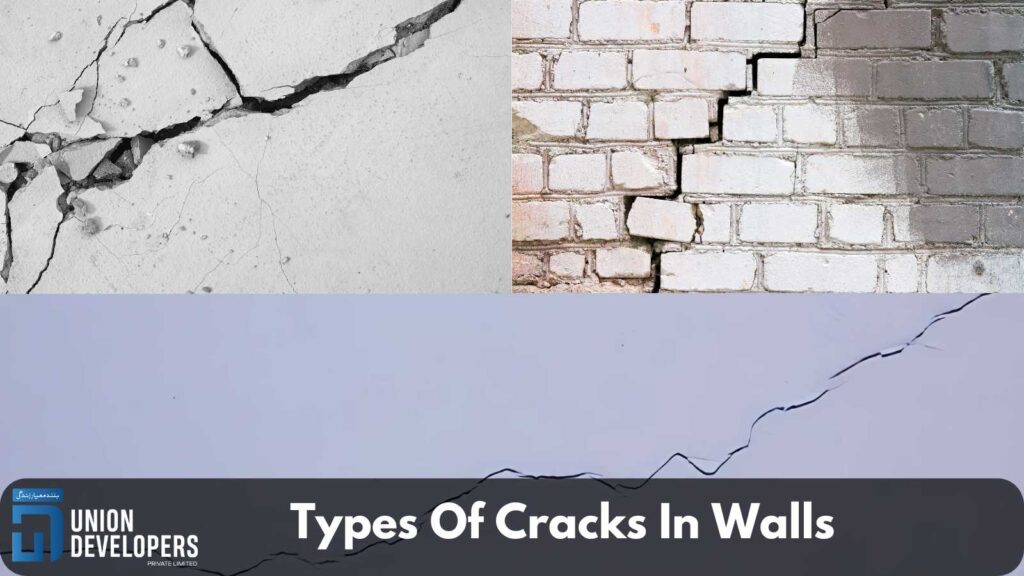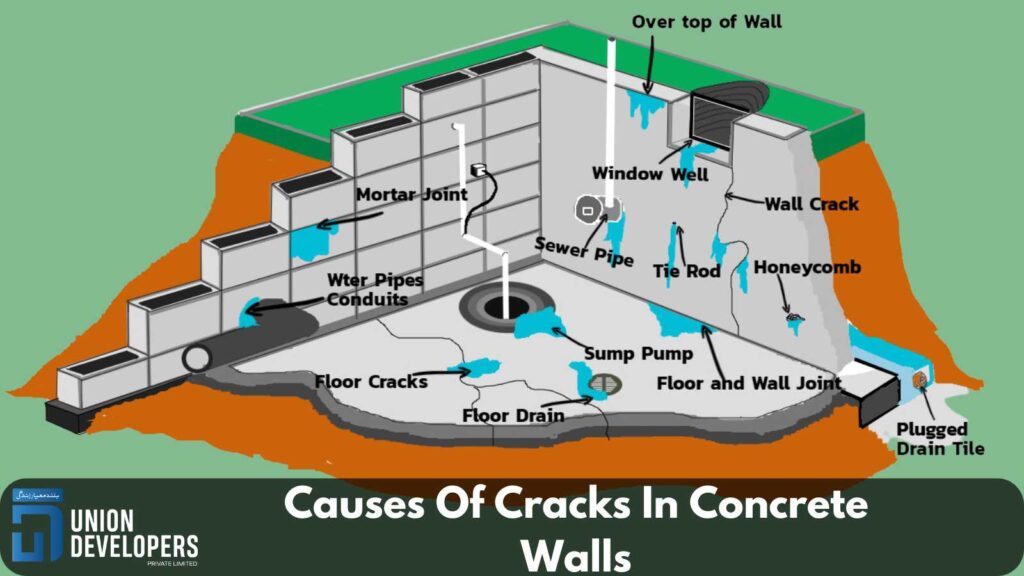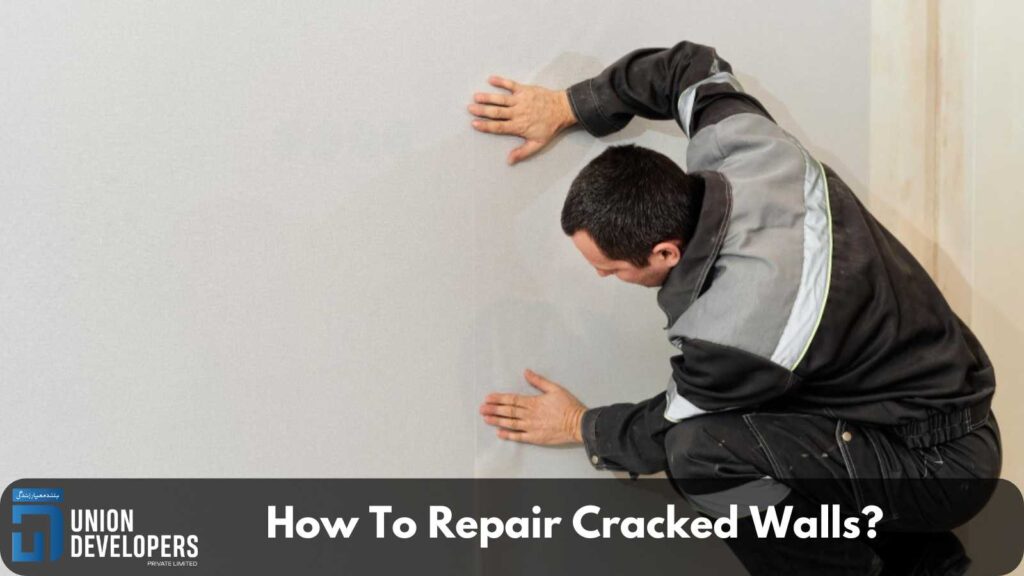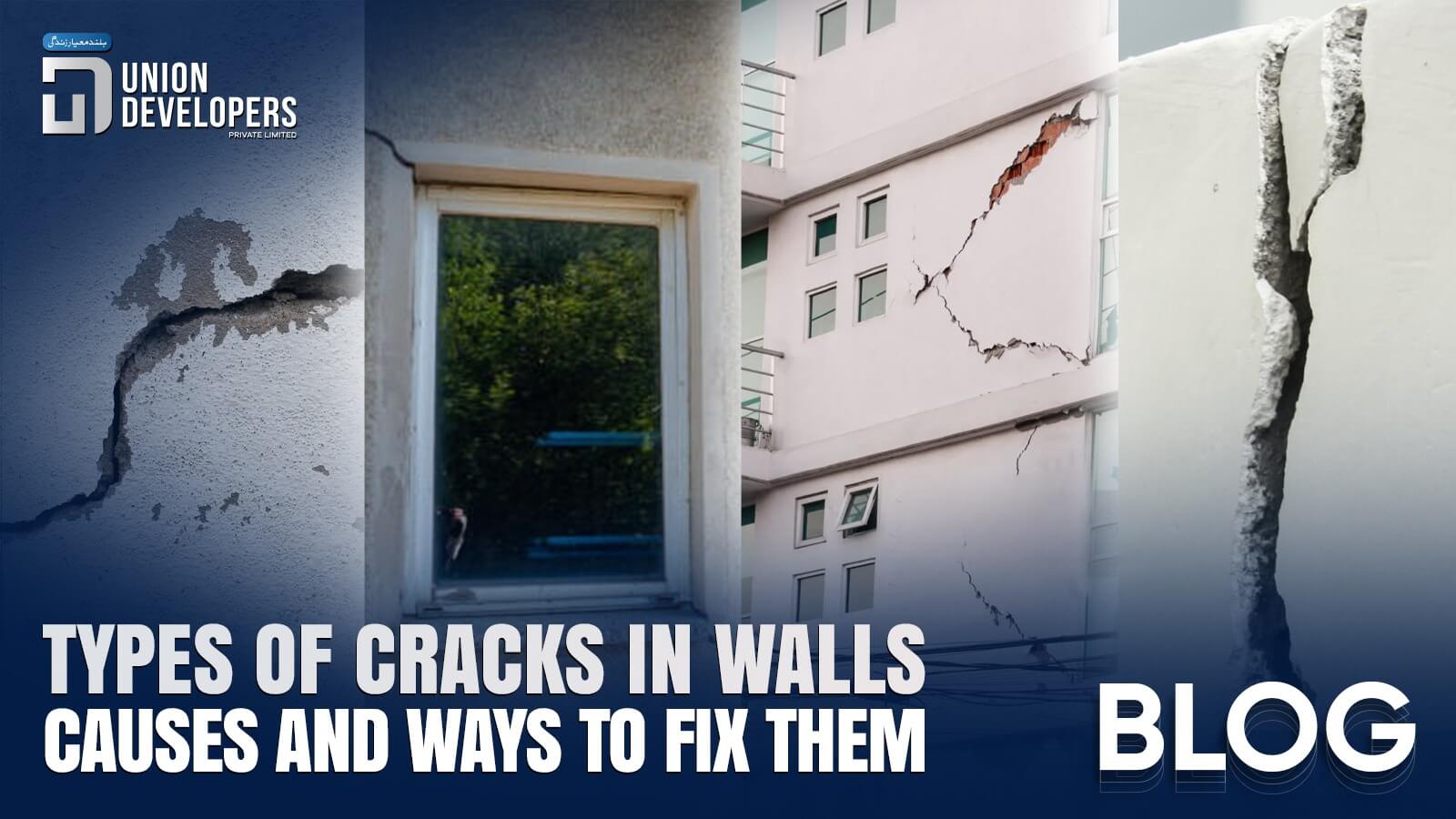Have you ever noticed any cracks in your house walls? Cracks in the walls are not just a visual issue but more than that. These wall cracks indicate the structural issues in the house. Some of the minor cracks in walls can be fixed with just waterproofing, but others need more serious solutions. Can you tell what the cause of wall cracks is? If you don’t know the reason yet, you have come to the right place. In this article, we will discuss the types of cracks in walls and their common causes and possible solutions.
Types Of Cracks In Walls

A house repair becomes crucial whenever you witness cracks in the wall. But before proceeding to the possible solution, you must know about the types of cracks for better understanding. This will help you identify the type of cracks in your house and look for a solution.
1- Hairline cracks
These are thin cracks in the house walls. These are often 1/16” wide, which gives bad visual appeal. The reasons for these hairline cracks are natural expansion, weather elements water intrusion, etc.
2- Vertical cracks
These cracks often run straight up and down from the ceiling to the floor. They are caused by minor shifts in temperature changes, which have bad visual appeal.
3- Horizontal Cracks
These cracks run parallel to the ground, and these indicate the issues with the building foundation, soil pressure, and structural movement.
4- Diagonal Cracks
These cracks often intersect with other wall cracks. Diagonal cracks are caused by structural movements or by the stress on the house by external forces.
5- Stair-step Cracks
These diagonal cracks follow a zigzag pattern across mortar joints or block walls. They are commonly seen in masonry and brickwork and result from issues with foundation setting.
Not all of these cracks can be resolved with simple waterproofing solutions. Usually, only small vertical cracks and hairline cracks can be prevented through house waterproofing. Preventing all the cracks in walls is extremely important, and bigger and wider cracks always need severe attention.
Causes Of Cracks In Concrete Walls

There are many factors that can cause cracks in walls. Sometimes frequent cracks that appear over time again need more close attention. The important thing is to know the cause of the cracks as early as possible. There are three main reasons for the cracks in walls: thermal movement, settlement, and moisture.
Settlement
Settlement is a well-known term when you research cracked walls. The cracks in the walls sometimes occur in the new-build properties as the structure settles while the building materials move after construction. Settlement is the process that new buildings must go through as the foundations compact under the structure’s weight, which eventually stops when the structure stabilises.
Similarly, heave and subsidence are caused by the ground moving beneath but can happen in older properties. This movement is caused by defective drainage, trees, mining activity close to the building, and weak ground.
Thermal Movement
Thermal movement can happen when changing environmental temperatures lead to the contraction and expansion of construction materials. Every building can contract and expand with temperature, humidity changes, and moisture throughout the year. Some buildings experience more cracks because of the less flexible materials being used.
Moisture
One of the most common reasons for cracked exterior walls is weathering. These cracks are caused by either the small hairline cracks, which allow the moisture to enter the surface, or absorbing wind-driven. When the water undergoes a freeze-thaw cycle, the moisture expands; this expansion causes movement within the exterior walls.
Moreover, if the water vapour cannot breathe naturally through exterior walls it becomes trapped. When the moisture is trapped in the walls, it causes more cracking.
How To Repair Cracked Walls?

If you are determined to take the correct steps, then the cracked walls can be repaired. Here is the process that will allow anyone to repair the cracks in walls and also restore the walls.
Here is what you will need to repair the cracked walls:
- A mini-disk cutter or a chisel
- Masonry filler
- Textured Basecoat
- A wire brush
- Filling knife
- Power washer
- Masonry cleaner
- Sandpaper
Identify The Damage
The first step is to know what kind of cracks you are dealing with. Sometimes cracks can be filled with just exterior masonry filler. If you have large open cracks, you can use a textured basecoat or render mix. Always ensure that the other areas of the walls are saved from damage. Also, check that your walls do not have any spalling bricks if they’re brick walls.
On the rendered walls, you must tap on the surface to check the render is safe. If you see the surface is hollow, you must remove this because eventually, it will fall off.
Clean The Surface
Before repairing your walls, it is important to clean the surface first. This helps dislodge any loose external material. You can clean the wall using a hosepipe, a stiff brush, a pressure washer, and hot soapy water. This is the first step to cleaning all the dirt on the walls. After that, you must apply the exterior cleaner that contains a fungicide. This will kill any organic growth on the walls. You can leave it for a minimum of two hours after applying the cleaner to the surface.
Open Up Cracks
It can sound counterproductive, but very small hairline cracks must be made larger in order to properly repair them. This is because these hairline cracks do not allow the filler to grip fully to fill the gap. The best way to open up the cracks is to use a tool like a mini-dirk cutter that you can run through each crack.
Also, you can use a masonry chisel to open the crack. Once the crack is larger, you can remove the dust from inside. Remove any debris from the larger cracks without opening them further.
Fill The Cracks
You can use a suitable masonry filler to repair the cracks by using a filling knife or an application gun. The masonry filler tube will allow you to fill deeper cracks easily. Work filler back and forth while applying; it will help counter any shrinkage. If you are repairing the natural brickwork, repair the surface as discretely as possible. It will help you disguise the repair, but if it is still visible, then there is another way to blend it.
Textured Basecoat
It is often possible for newly repaired areas to be visible. This is because many exterior walls have textured surface finishes, from cement renders to semi-smooth sand. It can be difficult to disguise them. At this point, a textured basecoat will help to mask these different textures to create one textured finish.
Lastly,
Cracks in walls happen often in buildings, but identifying the types and repairing them is crucial. Sometimes cracks are temporary and can be prevented from happening further. Heating and ventilation help to keep the temperature of the house moderate. Ventilation will allow moisture to escape within time, resulting in fewer cracks in the future.
Moreover, avoid planting trees or any shrubs close to your house to prevent moisture. Identify the cause of your house cracking to prevent it. You can also get the best construction services to strengthen your house’s foundation from the beginning.





